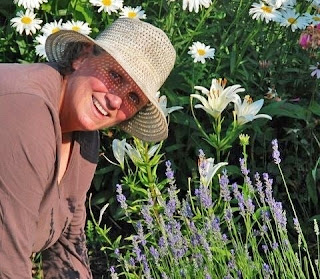It was a fairly dry week again and the awful wildfire smog from Canada descended on us for several days making any gardening outside unpleasant, but then as I was drafting this post a soaking RAIN hit -- hurray!
We dug up the 'Parisian' carrots that we planted from seed last March. You can watch a video of that reveal here. In their spot, I finally planted the five tomato plants I had set aside and there was a volunteer tomato plant (I believe it is 'Red Currant') that I left in there as well. The ones I planted include: 'Yellow Pear', 'Green Zebra', 'White Currant', 'Sun Gold', and 'Eldorado'. All of these tomato plants are struggling as they did not do well in the drought period in their little pots, but I hope they recover enough to give us some fruits.
We gave the Pepper plants and Dahlias some fertilizer and weeded a bit as well.
We placed the support netting over the cut-flower beds and Dahlias. Almost all the cutting-garden's seeds germinated, so we should probably thin them next week or the week after. I've already thinned the crowded Zinnia 'Thumbelina' in the Popup Garden. I managed to pull some of them out roots and all then transplanted a few in spots in my home garden. We'll see how they do in those places versus the container garden. The row of Marigold 'Super Hero Spry' seeds is not germinating yet, but I'll give them another week before I consider replacing them.
Meanwhile, we did give up on the second Zucchini mound planted with 'Dark Star' Zucchini seeds. In their spot, we planted another heirloom Zucchini 'Cocozelle'. Let's hope these do better for us. The mound with the 'Incredible Escalator' Zucchini is growing by leaps and bounds. I expect it to start working its way up the nearby trellis soon.
This next week I'm planning to pull out the last of the lettuce and peas and plant beans in their spot. I also have some more herb seedlings to get in the ground and want to start okra and cotton seeds.









